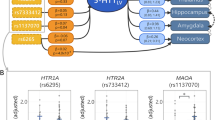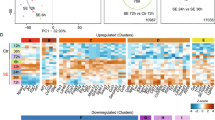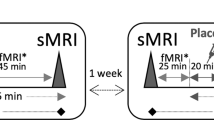Abstract
The common genetic variation of the serotonin transporter-linked polymorphic region (5-HTTLPR) has been related to depressive symptoms, in particular after stressful life events. Although it has been investigated in the past, results suggesting that the 5-HTTLPR genotype also affects hippocampal volume are often inconsistent and it remains unclear to what extent reduced hippocampal volume is influenced by the effect of stressful life events and 5-HTTLPR genotype. Moreover, sex, which is known to affect the prevalence of depression substantially, has not been taken into account when trying to disentangle the interactive effect of common genetic variation and environmental stressors on the hippocampus. We investigated this potentially relevant three-way interaction using an automatic magnetic resonance imaging (MRI)-based segmentation of the hippocampus in 357 healthy individuals. We determined the 5-HTTLPR genotype as a biallelic locus and childhood adversity (CA) using a standard questionnaire. An interaction for hippocampal volume was found between the factors sex, genotype, and severe CA (p=0.010) as well as an interaction between genotype and severe CA (p=0.007) in men only. Post hoc tests revealed that only male S’-allele carriers with severe CA had smaller hippocampi (p=0.002). Interestingly, there was no main effect of genotype in men, while female S’-allele carriers had smaller hippocampi than L’L’ carriers (p=0.023). Our results indicate that sex modulates the interactive effect of the 5-HTTLPR genotype and CA on hippocampal volume. While the S’-allele is associated with hippocampal volume independent of CA in women, men only have smaller hippocampi if they carry the risk allele and experienced severe CA.
Similar content being viewed by others
Log in or create a free account to read this content
Gain free access to this article, as well as selected content from this journal and more on nature.com
or
References
Amico F, Meisenzahl E, Koutsouleris N, Reiser M, Möller HJ, Frodl T (2011). Structural MRI correlates for vulnerability and resilience to major depressive disorder. J Psychiatry Neurosci 36: 15–22.
Breslau N, Chilcoat HD, Kessler RC, Davis GC (1999). Previous exposure to trauma and PTSD effects of subsequent trauma: results from the Detroit Area Survey of Trauma. Am J Psychiatry 156: 902–907.
Brown SM, Hariri AR (2006). Neuroimaging studies of serotonin gene polymorphisms: exploring the interplay of genes, brain, and behavior. Cogn Affect Behav Neurosci 6: 44–52.
Brugha T, Bebbington P, Tennant C, Hurry J (1985). The list of threatening experiences: a subset of 12 life event categories with considerable long-term contextual threat. Psychol Med 15: 189–194.
Brummett BH, Boyle SH, Siegler IC, Kuhn CM, Ashley-Koch A, Jonassaint CR et al. (2008). Effects of environmental stress and gender on associations among symptoms of depression and the serotonin transporter gene linked polymorphic region (5-HTTLPR). Behav Genet 38: 34–43.
Canli T, Lesch KP (2007). Long story short: the serotonin transporter in emotion regulation and social cognition. Nat Neurosci 10: 1103–1109.
Canli T, Qiu M, Omura K, Congdon E, Haas BW, Amin Z et al. (2006). Neural correlates of epigenesis. Proc Natl Acad Sci USA 103: 16033–16038.
Caspi A, Sugden K, Moffitt TE, Taylor A, Craig IW, Harrington H et al. (2003). Influence of life stress on depression: moderation by a polymorphism in the 5-HTT gene. Science 301: 386–389.
Chan SW, Goodwin GM, Harmer CJ (2007). Highly neurotic never-depressed students have negative biases in information processing. Psychol Med 37: 1281–1291.
Cole J, Weinberger DR, Mattay VS, Cheng X, Toga AW, Thompson PM et al. (2011). No effect of 5HTTLPR or BDNF Val66Met polymorphism on hippocampal morphology in major depression. Genes Brain Behav 10: 756–764.
Copeland WE, Keeler G, Angold A, Costello EJ (2007). Traumatic events and posttraumatic stress in childhood. Arch Gen Psychiatry 64: 577–584.
Cuijpers P, Smit F, Unger F, Stikkelbroek Y, Ten Have M, de Graaf R (2011). The disease burden of childhood adversities in adults: a population-based study. Child Abuse Negl 35: 937–945.
De Bellis MD, Keshavan MS (2003). Sex differences in brain maturation in maltreatment-related pediatric posttraumatic stress disorder. Neurosci Biobehav Rev 27: 103–117.
Dutt A, McDonald C, Dempster E, Prata D, Shaikh M, Williams I et al. (2009). The effect of COMT, BDNF, 5-HTT, NRG1 and DTNBP1 genes on hippocampal and lateral ventricular volume in psychosis. Psychol Med 39: 1783–1797.
Eley TC, Sugden K, Corsico A, Gregory AM, Sham P, McGuffin P et al. (2004). Gene-environment interaction analysis of serotonin system markers with adolescent depression. Mol Psychiatry 9: 908–915.
Frodl T, Koutsouleris N, Bottlender R, Born C, Jäger M, Mörgenthaler M et al. (2008). Reduced gray matter brain volumes are associated with variants of the serotonin transporter gene in major depression. Mol Psychiatry 13: 1093–1101.
Frodl T, Reinhold E, Koutsouleris N, Donohoe G, Bondy B, Reiser M et al. (2010). Childhood stress, serotonin transporter gene and brain structures in major depression. Neuropsychopharmacology 35: 1383–1390.
Gallinat J, Ströhle A, Lang UE, Bajbouj M, Kalus P, Montag C et al. (2005). Association of human hippocampal neurochemistry, serotonin transporter genetic variation, and anxiety. Neuroimage 15: 123–131.
Heils A, Teufel A, Petri S, Stöber G, Riederer P, Bengel D et al. (1996). Allelic variation of human serotonin transporter gene expression. J Neurochem 66: 2621–2624.
Heim C, Nemeroff CB (2001). The role of childhood trauma in the neurobiology of mood and anxiety disorders: preclinical and clinical studies. Biol Psychiatry 49: 1023–1039.
Heim C, Shugart M, Craighead WE, Nemeroff CB (2010). Neurobiological and psychiatric consequences of child abuse and neglect. Dev Psychobiol 52: 671–690.
Jacobs BL, Azmitia EC (1992). Structure and function of the brain serotonin system. Physiol Rev 72: 165–229.
Jaenicke C, Hammen C, Zupan B, Hiroto D, Gordon D, Adrian C et al. (1987). Cognitive vulnerability in children at risk for depression. J Abnorm Child Psychol 15: 559–572.
Karg K, Burmeister M, Shedden K, Sen S (2011). The serotonin transporter promoter variant (5-HTTLPR), stress, and depression meta-analysis revisited. Evidence of genetic moderation. Arch Gen Psychiatry 68: 444–454.
Karl A, Schaefer M, Malta LS, Dörfel D, Rohleder N, Werner A (2006). A meta-analysis of structural brain abnormalities in PTSD. Neurosci Biobehav Rev 30: 1004–1031.
Konrad C, Ukas T, Nebel C, Arolt V, Toga AW, Narr KL (2009). Defining the human hippocampus in cerebral magnetic resonance images--an overview of current segmentation protocols. Neuroimage 47: 1185–1195.
Kudielka BM, Hellhammer DH, Wüst S (2009). Why do we respond so differently? Reviewing determinants of human salivary cortisol responses to challenge. Psychoneuroendocrinology 34: 2–18.
Kudielka BM, Kirschbaum C (2005). Sex differences in HPA axis responses to stress: a review. Biol Psychol 69: 113–132.
Kugaya A, Epperson CN, Zoghbi S, van Dyck CH, Hou Y, Fujita M et al. (2003). Increase in prefrontal cortex serotonin 2A receptors following estrogen treatment in postmenopausal women. Am J Psychiatry 160: 1522–1524.
Lenroot RK, Giedd JN (2010). Sex differences in the adolescent brain. Brain Cogn 72: 46–55.
Lupien SJ, McEwen BS, Gunnar MR, Heim C (2009). Effects of stress throughout the lifespan on the brain, behaviour and cognition. Nat Rev Neurosci 10: 434–445.
MacLusky NJ, Clark AS, Naftolin F, Goldman-Rakic PS (1987). Estrogen formation in the mammalian brain: possible role of aromatase in sexual differentiation of the hippocampus and neocortex. Steroids 50: 459–474.
MacQueen G, Frodl T (2011). The hippocampus in major depression: evidence for the convergence of the bench and bedside in psychiatric research? Mol Psychiatry 16: 252–264.
Munafò MR, Durrant C, Lewis G, Flint J (2009). Gene X environment interactions at the serotonin transporter locus. Biol Psychiatry 65: 211–219.
O’Hara R, Schröder CM, Mahadevan R, Schatzberg AF, Lindley S, Fox S et al. (2007). Serotonin transporter polymorphism, memory, and hippocampal volume in the elderly: association and interaction with cortisol. Mol Psychiatry 12: 544–555.
Parsey RV, Oquendo MA, Simpson NR, Ogden RT, Van Heertum R, Arango V et al. (2002). Effects of sex, age, and aggressive traits in man on brain serotonin 5-HT1A receptor binding potential measured by PET using [C-11] WAY-100635. Brain Res 954: 173–182.
Patenaude B (2007). Bayesian statistical models of shape and appearance for subcortical brain segmentation. DPhil thesis, University of Oxford.
Patenaude B, Smith SM, Kennedy DN, Jenkinson M (2011). A Bayesian model of shape and appearance for subcortical brain segmentation. Neuroimage 56: 907–922.
Pruessner JC, Dedovic K, Pruessner M, Lord C, Buss C, Collins L et al. (2010). Stress regulation in the central nervous system: evidence from structural and functional neuroimaging studies in human populations-2008 Curt Richter Award Winner. Psychoneuroendocrinology 35: 179–191.
Risch N, Herrell R, Lehner T, Liang KY, Eaves L, Hoh J et al. (2009). Interaction between the serotonin transporter gene (5-HTTLPR), stressful life events, and risk of depression: a meta-analysis. JAMA 301: 2462–2471.
Sapolsky RM (2000). Glucocorticoids and hippocampal atrophy in neuropsychiatric disorders. Arch Gen Psychiatry 57: 925–935.
Selvaraj S, Godlewska BR, Norbury R, Bose S, Turkheimer F, Stokes P et al. (2011). Decreased regional gray matter volume in S′ allele carriers of the 5-HTTLPR triallelic polymorphism. Mol Psychiatry 16: 471, 472-3.
Sherwin BB (1998). Estrogen and cognitive functioning in women. Proc Soc Exp Biol Med 217: 17–22.
Sjoberg RL, Nilsson KW, Nordquist N, Ohrvik J, Leppert J, Lindstrom L et al (2006). Development of depression: sex and the interaction between environment and a promoter polymorphism of the serotonin transporter gene. Int J Neuropsychopharmacol 9: 443–449.
Suzuki M, Hagino H, Nohara S, Zhou SY, Kawasaki Y, Takahashi T et al. (2005). Male-specific volume expansion of the human hippocampus during adolescence. Cereb Cortex 15: 187–193.
Tottenham N, Sheridan MA (2010). A review of adversity, the amygdala and the hippocampus: a consideration of developmental timing. Front Hum Neurosci 8: 68.
Videbech P, Ravnkilde B (2004). Hippocampal volume and depression: a meta-analysis of MRI studies. Am J Psychiatry 161: 1957–1966.
Watson D, Clark LA, Tellegen A (1988). Development and validation of brief measures of positive and negative affect: the PANAS scales. J Pers Soc Psychol 54: 1063–1070.
Wendland JR, Martin BJ, Kruse MR, Lesch KP, Murphy DL (2006). Simultaneous genotyping of four functional loci of human SLC6A4, with a reappraisal of 5-HTTLPR and rs25531. Mol Psychiatry 11: 224–226.
Young E, Korszun A (2010). Sex, trauma, stress hormones and depression. Mol Psychiatry 15: 23–28.
Author information
Authors and Affiliations
Corresponding author
Ethics declarations
Competing interests
Dr Thomas Frodl received speaker′s fees from Shire and Lilly. All other authors declare no conflict of interest.
PowerPoint slides
Rights and permissions
About this article
Cite this article
Everaerd, D., Gerritsen, L., Rijpkema, M. et al. Sex Modulates the Interactive Effect of the Serotonin Transporter Gene Polymorphism and Childhood Adversity on Hippocampal Volume. Neuropsychopharmacol 37, 1848–1855 (2012). https://doi.org/10.1038/npp.2012.32
Received:
Revised:
Accepted:
Published:
Issue date:
DOI: https://doi.org/10.1038/npp.2012.32
Keywords
This article is cited by
-
Additional Insights into the Relationship Between Brain Network Architecture and Susceptibility and Resilience to the Psychiatric Sequelae of Childhood Maltreatment
Adversity and Resilience Science (2020)
-
Sex differences in hippocampal cognition and neurogenesis
Neuropsychopharmacology (2019)
-
Animal models of PTSD: a challenge to be met
Molecular Psychiatry (2019)
-
The effects of childhood maltreatment on brain structure, function and connectivity
Nature Reviews Neuroscience (2016)
-
Overexpression of Forebrain CRH During Early Life Increases Trauma Susceptibility in Adulthood
Neuropsychopharmacology (2016)



